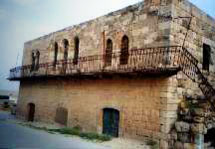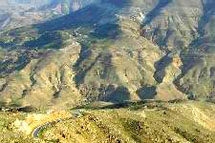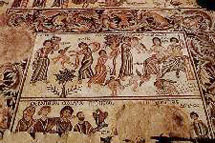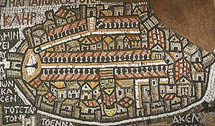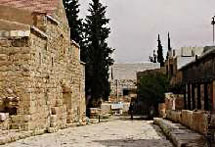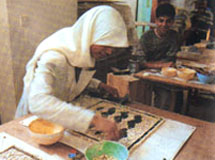
 |
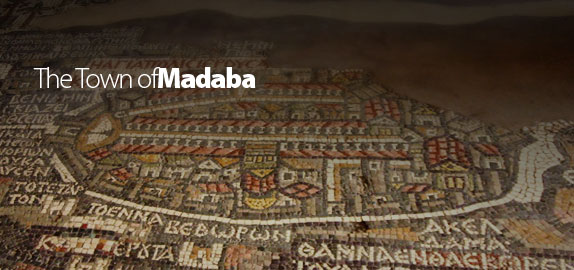 |
|
|
___________________ ___________________ ___________________ ___________________ ___________________ ___________________ |
THE TOWN OF MADABA The "mosaic town of Jordan" Madaba is historically one of the oldest towns of the Middle East. It was part of the lands allocated by Moses to the Reubenites and the Gadites (see Joshua 13 v9). This was the land of Moab, where Ruth came with Naomi and it was here that she met her second husband. Later it became known as the Christian town of Madaba and contains many churches, most of them ruined but where you can still see some extraordinary mosaics from the 7th and 8th centuries. This was Madaba's "golden age" when it was an important town and the seat of an archbishop. We highly recommend our guest to watch this Video, we created to help you explore the Madaba City and see most of it. Also you may download it to your mobile so you can use it off line during your visit to Madaba city.
Transport between Madaba and Amman is excellent, with regular buses going to and from all the chief bus stations in Amman. The fare is less than half a dinar and buses run up to 10 o'clock at night. There is easy road access to the Desert Highway, the main north-south highway in Jordan, and it is possible to take the Ring Road around Amman to reach Jerash and the Desert Castles. Madaba makes a very good centre for visiting north and central Jordan. Besides its history, Madaba is an interesting town to wander in. There are many splendid houses from the Ottoman period scattered around the old town ; they often appear unexpectedly among the lines of washing or telephone wires. You need to look closely to realise just how old they are. Some of them are being purchased by the town to be restored. Most of them were built by the Christian families who "emigrated" to the Madaba area at the end of the nineteenth century. They are usually named after the family which built them. The "Twal House" is now the museum. The town is actually at the beginning of the original north-south highway "the Kings' Highway" which snakes through the Mujib and Haasa Valleys giving spectacular views. A private bus usually goes along this road once a day taking tourists from Madaba to Petra. Otherwise there is no public transport going all the way along this road, which is a pity. It is possible to take a bus from Madaba to Dhibon, a taxi across Wadi Mujib to Ariha (7JD) and find a bus from there to Kerak. This is likely to take a full day since the buses are not frequent. This road is very ancient and was restored at one time by the Romans for whom it was the only way to occupy eastern Palestine. There are several Roman milestones to be seen along it, notably in Wadi Mujib, which is also a protected Nature Reserve run by the Jordanian Royal Society for the Conservation of Nature. You might like to look at the web page "Nearby places of interest"
The most famous of the mosaics is the Map of the Holy Land to be seen in St George's Church. This is what is left of a map which covered Palestine from Alexandria to the eastern desert of Jordan. It is centred on the city of Jerusalem and shows most of the places that pilgrims would wish to visit. You can see the Dead Sea marked, with the fish returning to swim up the river and away from the salt water. It was by following this map that the site of the baptism of Christ was discovered : archaeologists dug at the site shown on the map to find the remains of the site of Bethany. The Museum of Madaba is collecting many other mosaics which are difficult to conserve in the original locations, and has installed an "Archaeological Park" around the old Roman streets and the Church of the Virgin where some beautiful mosaics have been found. This also includes the site of "Hyppolitus Hall" where you can see the remains of a mosaic showing the story of Hyppolitus who fell in love with his stepmother. This is one of the most beautiful mosaics in Madaba - see the photo above. A Mosaic school has been established which not only trains students in the restoration of the old mosaics and their copying, but also teaches them how to make modern mosaics which are bought by many people, both tourists and residents of Jordan to decorate their homes. The technique used is still the old one, of painstakingly assembling tiny pieces of coloured stone to produce the picture. Students remain in the school for a couple of years before graduating and usually find employment rapidly.
|
|


